April 17th, 2014
Mongolia lies in central Asia between Siberia on the north and China on the south. It is a land full of vast emptiness, nearly twice the size of Eastern Europe and with a population of 3,226,516 (2013 est.), it is the least populous country in the world. It is slightly larger than Alaska. The name Mongol comes from a small tribe whose leader, Ghengis Khan, began a conquest in the 13th century that would eventually encompass an enormous empire stretching from Asia to Europe, as far west as the Black Sea and as far south as India and the Himalayas. After his death the empire was divided into several powerful Mongol states, but these broke apart in the 14th century. The Mongols eventually retired to their original steppe homelands and in the late 17th century came under Chinese rule of the Manchu dynasty which divided Mongolia into Inner Mongolia and Outer Mongolia.
Mongolia won its independence in 1921 with Soviet backing and a communist regime was installed in 1924. The modern country of Mongolia, however, represents only part of the Mongols’ historical homeland; more ethnic Mongolians live in the Inner Mongolia Autonomous Region in the People’s Republic of China than in Mongolia. The State of Mongolia was formerly known as Outer Mongolia. It contains the original homeland of the historic Mongols, whose power reached its zenith during the 13th century under Kublai Khan. Outer Mongolia became a democratic democracy in 1990. Inner Mongolia continued to remain under Chinese control.
Here are some interesting facts about this landlocked country:
1. Chinese history dating back more than 2,000 years records periodic attacks and plunders of its farmlands, villages and town by China by marauding nomadic tribes from the west, which led to its construction of the Great Wall around 200 B.C. to protect itself from incursions. But by the 14th century, the Mongolian kingdom was in serious decline, with invasions from a resurgent China and internal conflict and warfare. The Great Wall is in Inner Mongolia.
2. Ulaanbaatar (population 949,000) is the capital of Mongolia and its largest city. As a nomadic city, the capital used to move three times a year! The name means “Red Hero.” A 131-foot statue of Genghis Khan sits on the steppe about an hour’s drive from Ulaanbaatar.
3. The official language is Mongolian (90%). Other languages spoken include Turkic and Russian.
4. Based on 2011 estimates, of the total population, 97.4% are literate (96.8% male and 97.9% female). There was a time when education in Mongolia was managed by Buddhist monasteries and only monks had access to it. Today, Mongolia has 178 colleges, universities and teacher training colleges, of which 42 are public. The National University of Mongolia (established in 1942), situated in Ulaanbaatar, was the country’s first modern institution of higher education.
5. The Ministry of Science, Technology, Education and Culture (MSTEC) is the central administrating body that formulates nationwide education policy and sets the standard for each level of formal education beginning with nursery education through university higher education.
6. Mongolia has a parliamentary system of government. The current president of Mongolia, Tsakhiagiin Elbegdorj, attended both the University of Colorado at Boulder and Harvard University in the U.S.

President Tsakhiaglin Elbegdorj
7. The ethnic makeup of the people is: 94.9% Mongol (predominantly Khalkha), 5% Turkic (of which Kazak is the largest group), and 0.1% other (including Chinese and Russian).
8. Religion: 53% Buddhist Lamaist, 3% Islam, 2.2% Christian, 2.9 % Shamanist, 0.4% other, 38.6% none (2010 est.)
9. Mongolia’s natural resources include: oil, copper, molybdenum, tungsten, phosphates, tin, nickel, zinc, wolfram, fluorspar, gold, silver, iron.
10. Mongolia’s agriculture includes: wheat, barley, vegetables, forage crops, sheep goats, cattle, camels, and horses.
11. Mongolia stands an average of 5,800 feet above sea level.
12. Despite its landlocked status, Mongolia has many salt lakes. Mongolian lakes and rivers contain more than fifty unique fish species.
13. Mongolia has the oldest National Park in the world. Lying just South of Ulaanbaatar the Bogd Khan National Park dates its origin to 1778 — it predates Yellowstone by over 100 years. Established by the Mongolian government in 1778, it was originally chartered by Ming Dynasty officials in the 1500s as an area to be kept off limits to extractive uses, protected for its beauty and sacred nature.
14. The Gobi Desert, the largest in Asia and the fifth largest in the world, is in Mongolia. The Gobi was once a sea and now filled with marine fossils. Roy Chapman Andrews made the first discovery of dinosaur eggs in the Gobi. His exploits inspired the creation of Indiana Jones. Many dinosaur fossils still lie exposed.
15. Genghis Khan could not read or write, but he commissioned the first Mongolian writing system – the Mongolian script. Since the Soviet period, Mongolians have used the Cyrillic script. In Mongolian, the verb comes last. If you want to know whether a Mongolian loves or hates you, you have to wait till the end of the sentence!
16. Mongol Khuumii or throat singing involves producing two simultaneous tones with the human voice.
http://www.youtube.com/watch?v=i0djHJBAP3U
17. The three most popular sports are horse racing, archery, and Mongolian wrestling.
18. Animals native to Mongolia include:
a) Snow leopards: quarter of the world’s population of snow leopards live in Mongolia.
b) The two-humped camel: survives temperatures from minus to plus fifty degrees Celsius!
c) The Mongolian Takhi horse is the last wild horse in the world. Mongolians do not name their horses; they refer to them by color.
and,
d) Eagles which are kept as pets by nomads. The Kazakh minority hunt with them.
19. Mongolia’s diet is primarily meat and dairy products. The local alcoholic drink is airag, fermented mare’s milk.
20. In the streets of Ulaanbaatar you’ll find a large number of so-called MobiPhones. These are wireless phones operated by phone vendors who charge users 100 tugriks per minutes. The phones are about two times the size of a regular phone but you’ll see them at small kiosks around the city.
Bonus fun fact:
When walking down a street in a Mongolian town or city if you accidentally bump into a person or brush past them, don’t be surprised if the other person reaches for your hand. Go ahead and shake their hand or even just touch it to apologize and express that it was indeed an accident and not intentional. The same gesture applies if your leg accidentally hits someone else’s under the table. Remember to shake hands!
Sources:
http://www.mongolia-travel-guide.com/mongolia-facts.html#ixzz2yz0Oztou
http://www.factmonster.com/country/mongolia.html
https://www.cia.gov/library/publications/the-world-factbook/geos/mg.html
http://listverse.com/2013/10/10/10-amazing-facts-about-the-mongols/
Academic Credentials Evaluation Institute, Inc.
www.acei1.com

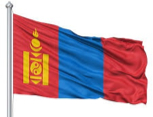
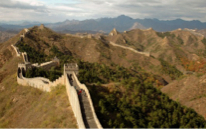
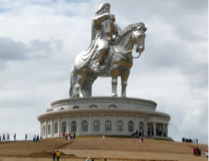


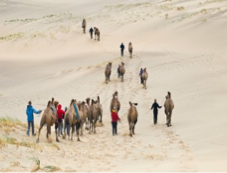
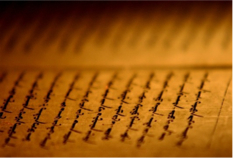

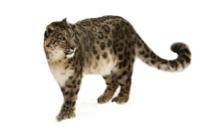

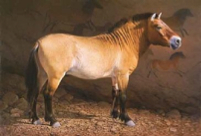


Another fact: Mongolia has a booming hip hop scene! http://www.mongolianbling.com
Thanks, Benj Banks for the link on Mongolia’s hip hop scene. Fascinating!
Pingback: Market Snapshot: Mongolia - ICEF Monitor - Market intelligence for international student recruitment
The last fun fact was great and good to know
Another interesting fact: The fabric Cashmere originated from the native Mongolians. Cashmere comes from downy undercoats of cashmere goats, which were used to help keep the goats warm.
Cashmere was first used to make Indian shawls and are now used to make different luxury products, ranging from jumpers to furniture throws.
Most mongolians are very good beatboxers. My brother is an expert.